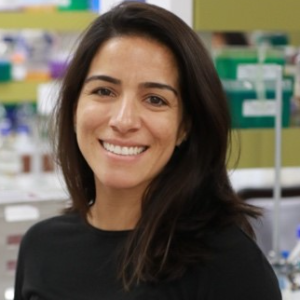Title : Application of patient-derived tumor xenograft models as a platform for investigating multidrug resistance in osteosarcoma
Abstract:
Osteosarcoma (OS) is the most common malignant bone tumor, accounting for 55% of cases in children and adolescents. The combination of polychemotherapy and surgical treatment has significantly improved patient survival. However, the survival rate for those with metastatic disease remains low, at around 25%. Furthermore, 46.9% of patients exhibit resistance to neoadjuvant chemotherapy. Drug resistance occurs when malignant cells develop resistance to multiple antineoplastic drugs. A key factor in this resistance is the overexpression of transporter proteins known as ABC transporters. These proteins, overexpressed in neoplastic cells, promote the efflux of drugs out of the cell, thereby limiting their effectiveness. Animal preclinical models with human xenografts or Patient-Derived Xenografts (PDXs) have increasingly been used to develop new therapeutic strategies in oncology and are particularly valuable as they retain the heterogeneity of the original tumor and accurately reflect the tumor biology of the patient. This study aims to evaluate the profile of multidrug resistance markers in human osteosarcoma samples and in tumors derived from patient-derived xenografts (PDXs). The study was approved by the human and animal ethics committees. Samples were collected from five patients with a histopathological diagnosis of OS and implanted in animals, with a grafting success rate of 59.1% (13 samples in 22 animals). The time to reach the final volume was significantly longer in P0 (1015 ± 550 mm³ , 177.1 ± 286.1 days) compared to P1 (1211 ± 575.9 mm³, 68.6 ± 28.3 days, p = 0.020) and P2 (1148 ± 670 mm³, 64.2 ± 22.1 days, p = 0.006). Histological analysis revealed morphological similarity between the parental tumor and the PDX samples across all passages, highlighting the model’s ability to replicate the original tumor's characteristics. To characterize the chemoresistance profile of the parental tumors and their corresponding xenografts, we evaluated the gene expression of ABC transporters ABCB1, ABCC1, and ABCG2. This analysis was performed using samples from three patients and their respective xenografts up to the second passage (P2). Sample (ONCO-046) exhibited positive expression of all three genes. ABCB1 expression was highest during implantation (P0) but became nearly undetectable in subsequent passages. ABCC1 expression remained relatively consistent across the samples, showing only a slight decrease in P1. ABCG2 expression was higher in P0 and decreased in the following passages. ONCO-031 sample demonstrated an increase in ABCC1 expression over the passages, while ABCB1 and ABCG2 were undetectable. ONCO-036 sample showed positive expression of ABCC1 and ABCG2 in the parental tumor. However, in the xenografts, ABCC1 expression increased 10- to 20-fold, while ABCG2 expression was absent, failing to replicate the parental tumor’s profile. We demonstrated that the xenografts successfully replicate the morphological characteristics of the parental tumors and that regulation of ABC transporter gene expression occurs in the analyzed samples. These findings do not rule out the potential use of this model for evaluating drugs capable of inhibiting these transporters. However, they highlight the importance of initially characterizing the gene expression profile to select samples suitable for such applications.



